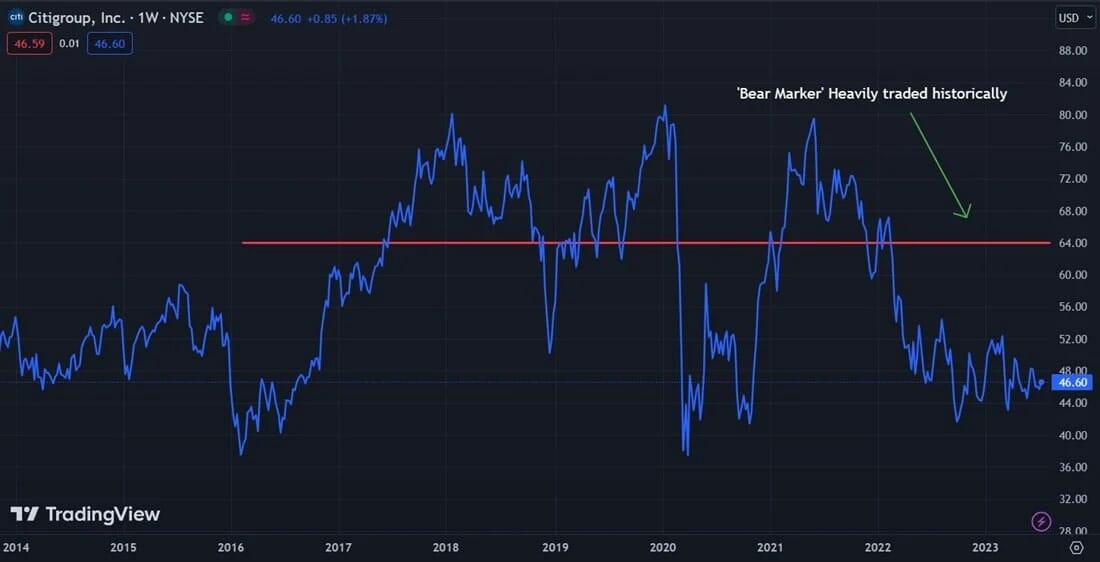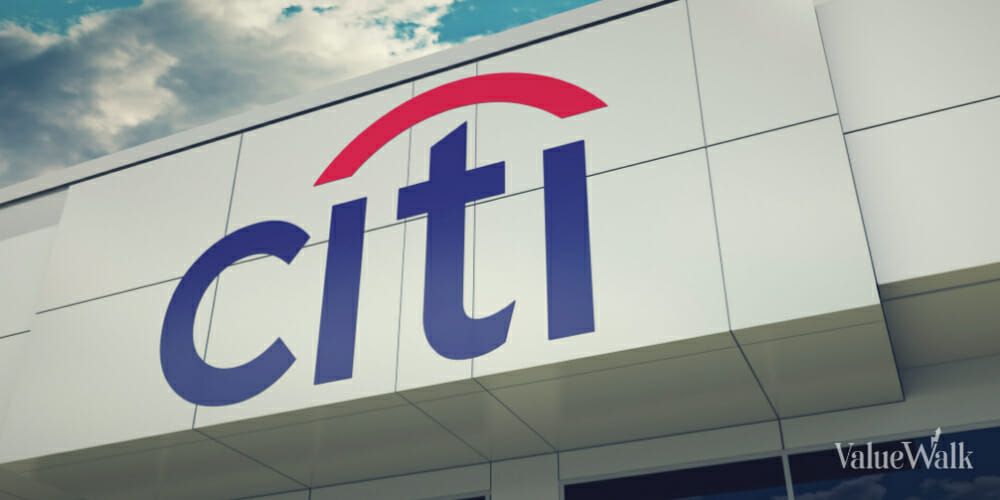Key Points
- After passing the FED’s annual ‘stress test,’ commercial and diversified banks have recently raised dividends. Citigroup did not need to raise the dividend payout as much as peers for reasons that will become clear once investors review today’s earnings results.
- These technical levels will be a heavily sought price range; once future catalysts close down valuation gaps, a discount to the sector shows investors that the time to buy could be approaching.
- The underlying business cycle is affecting some of the profit centers within the bank. However, these same trends are boosting profitability in other departments. These fundamental valuation metrics will show investors just how much of a value play Citigroup is.
- 5 stocks we like better than Bank of America
Not too long ago, commercial and investment banks passed the annual FED ‘stress test,’ where banks are under the heat of liquidity and leverage scrutiny. The leading United States firms passed with flying colors, and some of these names followed the results by boosting their dividend payouts handsomely.
Find A Qualified Financial Advisor
Finding a qualified financial advisor doesn’t have to be hard. SmartAsset’s free tool matches you with up to 3 fiduciary financial advisors in your area in 5 minutes.
Each advisor has been vetted by SmartAsset and is held to a fiduciary standard to act in your best interests.
If you’re ready to be matched with local advisors that can help you achieve your financial goals, get started now.
Citigroup (NYSE:C) was part of the winner’s list passing the FED’s tests. However, it also turned out to be the one bank to raise dividends by the lowest amount. However, the dividend payout decision may be more positive once investors consider where the dividend yield sits today.
Considering that Citigroup’s annual dividend yield is 4.34% today, it marks one of the highest yields for the company during the past decade. A historically high dividend yield implies, as investors should keep in mind in terms of valuation, that it can become a dual-edged sword.
Normalizing the yield would involve lowering the payout or raising the stock price to compress the yield. Citigroup reported its second quarter 2023 earnings results in the pre-market hours of Friday morning, and the figures point to a higher stock rather than a dividend cut in this case.
Perspective, Cyclical Earnings
Citigroup stock declines by 2.0% during Friday’s trading session, an initial adverse reaction to not-so-negative earnings. Investors should briefly look back into the stock price to find key liquidity levels to begin finding pivoting prices and considering that the stock hit a 2021 peak price of approximately $80.0 per share, followed by a subsequent decline toward today’s level of $46.5 per share.
This decline is essential to remember when taking Wall Street’s definition of a ‘Bear Market,’ characterized by a 20% decline from recent highs. This heavily traded level would be around $64 per share.

The above image showcasing Citigroup’s chart, which clarifies how this ‘Bear Marker’ of a 20% decline off highs is heavily traded/respected, can be a compass for investors to place their proximate targets. If a potential purchase is considered, the $64 per share mark could act as an initial proxy target.
One catalyst that could get the stock there may lie in the bank’s earnings results. Despite posting slowdowns in the top and bottom lines, the underlying drivers of the business are finding new traction into the next cyclical run.
Investors will find that the new trends dominating banking earnings will become a steady decline in investment banking revenues now that the FED is on a mission to cool off a heating economy.
By hiking interest rates and making financing harder for M&A (Mergers and Acquisitions) departments, these banks will likely see fees and revenues dry up within deal-making. Citigroup suffered an annual revenue decline of 24% in investment banking, followed by an additional 20% decline in corporate lending.
This is expected; as the underlying economy slows down (measured by falling inflation), businesses will not need as much financing due to slower business activity.
Future in Store
Full-year 2023 expectations laid out by management may reflect what the consumer is doing and trends that offset declines in other departments. United States card loans for Citigroup comprised more than 80% above 680 FICO scores, comprising 67% branded cards.
This can be a significant profit center that investors can lean on, especially when considering what could drive earnings higher and push the stock toward that $64 mark again. Since interest rates are rising, Citigroup’s gross loan yield for the quarter rose to 8.63%, a significant increase from 5.81% a year ago.
When investors spread valuations in the diversified banking peer group, a widening upside potential begins for Citigroup. Taking the forward price-to-earnings ratio, as opposed to the conventional P/E, potential buyers can gauge where markets value the bank’s future expected earnings.
Citigroup’s forward P/E lies at 7.7x, well below other diversified banks like Wells Fargo & Company NYSE: WFC and Bank of America NYSE: BAC, which trade at 9.1x and 9.0x, respectively. A clear discount to the peer group begins to form, and other commonly used valuation multiples agree.
Not only does the forward P/E point to high potential, but the historically high dividend yield agrees, and investors can top this trend off with the price-to-book ratio. By trading at a 0.5x P/B ratio, it can be assumed that Citigroup is selling at a discount to its ‘book’ value, which is usually music to any value investor’s ears.
Should you invest $1,000 in Bank of America right now?
Before you consider Bank of America, you’ll want to hear this.
MarketBeat keeps track of Wall Street’s top-rated and best performing research analysts and the stocks they recommend to their clients on a daily basis. MarketBeat has identified the five stocks that top analysts are quietly whispering to their clients to buy now before the broader market catches on… and Bank of America wasn’t on the list.
While Bank of America currently has a “Hold” rating among analysts, top-rated analysts believe these five stocks are better buys.
The post Citigroup Leads Banking Earnings, What’s Next? appeared first on MarketBeat.





